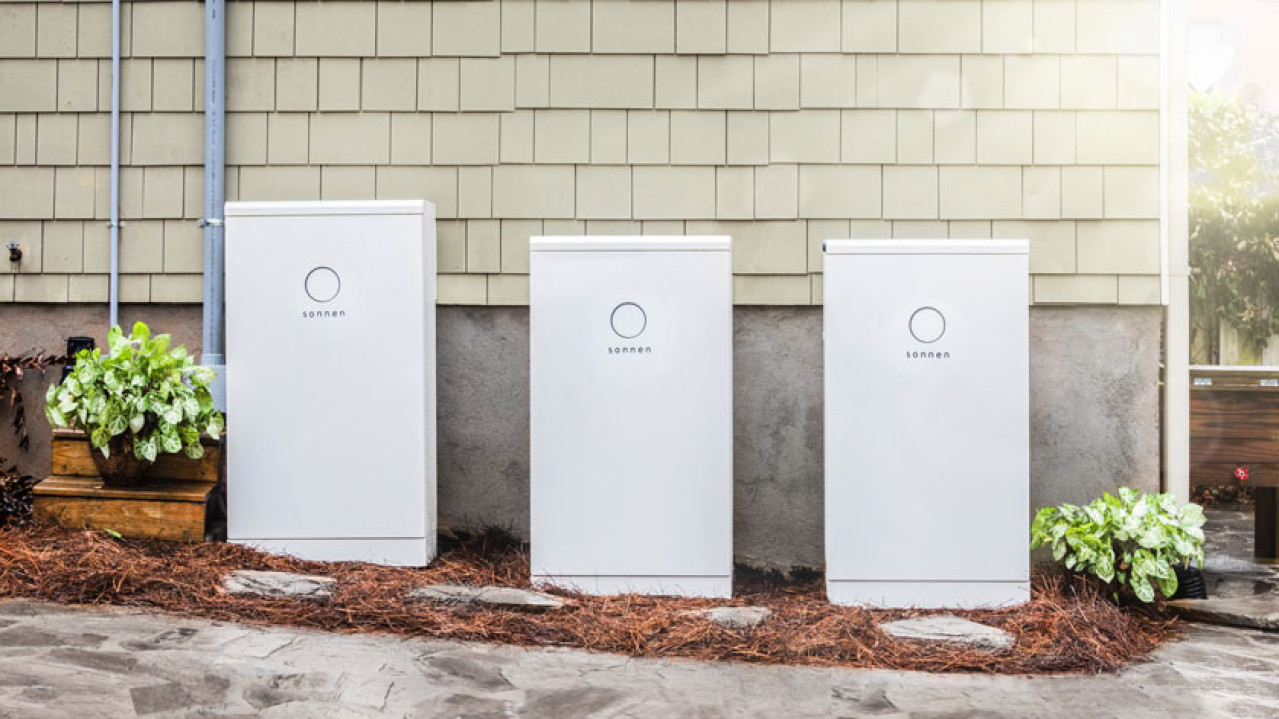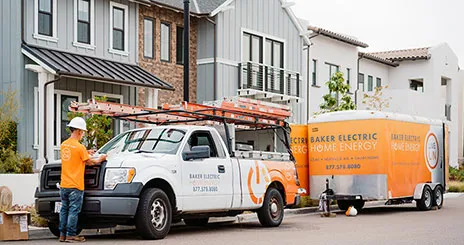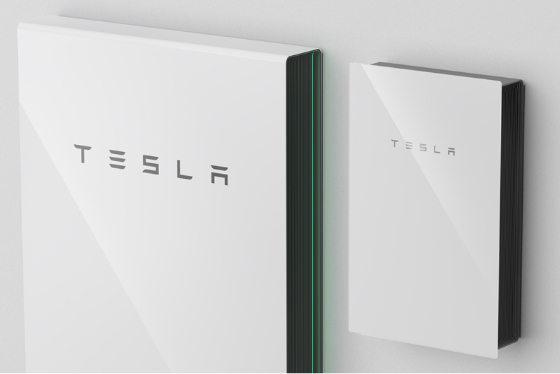
Today, batteries are an essential part of smartly managing your energy costs. Here’s what you need to know:
What is a home battery?
A home battery enables homeowners to store and use their own solar electricity independent of the Utility. It’s usually paired with a solar system so you can store excess electricity generated by your solar panels and use it when you need it.
Home batteries are typically made from lithium-ion (the same as you would find in your phone battery) and takes up a similar amount of space as a dishwasher, heat pump, or a small water heater. Some sit on the ground, some are wide and flat and mounted on a wall like a television. They are generally installed in a garage or outside where they can be protected from the elements or extreme temperatures. They weigh between 200 and 500 lbs, depending on capacity and components. They are safe, quiet, and aesthetically unobtrusive.
The term ‘solar battery’ is synonymous with ‘energy storage’ and ‘home battery’. They all refer to the same thing: batteries large enough to power a home.

Charging Your Batteries
Until recently, batteries eligible for the Federal Investment Tax Credit were only allowed to store excess energy generated from a home’s solar system. However, as of January 2023, owners can still receive the tax credit for batteries that are charged directly from the grid. Whether your stored energy comes from your solar or the grid, it is saved for whenever you need it most. Batteries have different amounts of storable maximum energy, which is typically the kilowatt-hour (kWh) rating of the battery. The higher the kWh available, the longer your home can be powered by your home battery system.
Using Your Stored Energy
A battery can be programmed to use its stored energy whenever you decide you need it. In general, a battery has two modes: Self-Consumption, or Backup Only.
Self-Consumption
This prioritizes your home’s use of your stored energy. This helps avoid purchasing electricity at expensive time-of-use rates reducing your energy bills. In most cases, it still allows you to set a backup buffer. A backup buffer is the minimum amount left in your battery, reserved for emergencies or an unexpected grid outage.
Backup Only
This mode keeps your battery charged and will only discharge when there is an outage. While it won’t help you out with your energy bills, it can be a great option if you want to ensure you always have as much energy as possible when the grid goes down.
Home Battery Longevity
Most home batteries are warrantied to last between 10 and 20 years but can continue to operate and save you money long after. The two variables that most affect a battery’s lifespan are a) its frequency of discharge, and b) the battery chemistry.
Like anything else, home batteries will last longer the less they are used. Batteries that are cycled every day, such as those set to Self-Consumption mode, won’t last quite as long as those in Backup Only mode. However, the 10-20 year warranties on most batteries assume daily use.
Battery chemistry refers to the chemicals used inside the battery. While all use lithium-ion, they differ in the chemicals they pair it with.
Nickel Manganese Cobalt (NMC) batteries are smaller, denser, and able to handle quicker inrushes of current, but don’t last as long as LFP batteries
Lithium Iron Phosphate (LFP) batteries are heavier and can withstand lower inrushes of current, but last longer and are capable of more cycles than NMC batteries.
Batteries With and Without Solar
Customers who already have a solar system installed under Net Energy Metering (NEM) 1.0 or 2.0 may add a home battery system and retain their original NEM status. They will remain with their original NEM status for the original 20 years of the full agreement since installation.
If you don’t have solar yet, no problem! Your home battery system will be registered under the Solar Billing Plan, or Net Billing Tariff (NBT), and Baker will optimize your system to take full advantage of the situation. Today, it is critical to include a battery in your home energy system to truly generate maximum savings.
Have More Questions? Here are answers to Frequently Asked Questions
If and when there is a blackout and the grid is “down”, your battery will typically only power a subset of your home. These are your backed-up circuits – and these appliances and outlets in your home will continue to operate.
An important number to keep in mind is the kWh rating of the battery. This can be thought of as the size of the “gas tank” in a car. The higher the kWh rating, the longer your battery will power the same number of circuits. Common sizes of kWh range from 3 to 20 kWh, which can power circuits anywhere from 4-60 hours.
Of course, if you want your entire home to operate in a grid outage, Baker can provide you with a whole home backup solution as well, which normally involves multiple batteries.
Most batteries in California are generally installed in a garage or on the outside of a house. Some batteries can be installed either inside or out, while others are restricted to indoors. Additionally, the area where you live will have an impact: Different cities have different rules on where you can place batteries. Baker has installed batteries extensively throughout the southern California region and will help guide you on where to best to place your battery.
While every battery offered by Baker can help power your home and provide backup power, certain batteries are better suited for different applications. Some batteries are better at providing a lot of power at once, while others excel at cycling every day. Keep in mind which of these two functions might be most important to you.
In its most basic form, batteries function by moving electrons back and forth from two components: the anode and the cathode. Nearly all home battery solutions on the market currently utilize a lithium-based anode to store the electrons. Where they differ is often in the cathode. Two of the most popular cathodes are Lithium Iron Phosphate (LFP), and Lithium Nickel Manganese Cobalt Oxide (NMC). Both LFP and NMC are robust, safe, and reliable options.
Batteries with an LFP cathode are generally heavier, denser, and longer-lasting than NMC batteries. They tend to back up fewer larger circuits but can be cycled many times with comparatively little degradation.
Conversely, NMC batteries are smaller, lighter, and can often handle larger loads.
Assuming you have the space and the budget, you can stack as many batteries as you’d ever need: Baker has installed systems of eight or more batteries. How many your home requires will be dependent on the backed-up loads as well as the total kWh rating of the battery. Your Baker representative can help you hone in on the right size system you need.
Yes, you can. And, as an additional bonus, if you already have solar and are under NEM 1 or NEM 2, you may add a battery and remain in that same status without having to switch to Net Billing Tariff (NBT).
A Virtual Power Plant is a network of installed batteries that can collectively act together to lessen the stress on the grid and generate ongoing income for the customer. Not all batteries qualify to participate in the same types of virtual power plants. There’s much to learn about this fascinating and exciting new energy frontier. Learn more about ChargeOn, Baker’s VPP where you can get $750 off a new sonnen battery and earn cash dividends for sharing your power with the grid.


